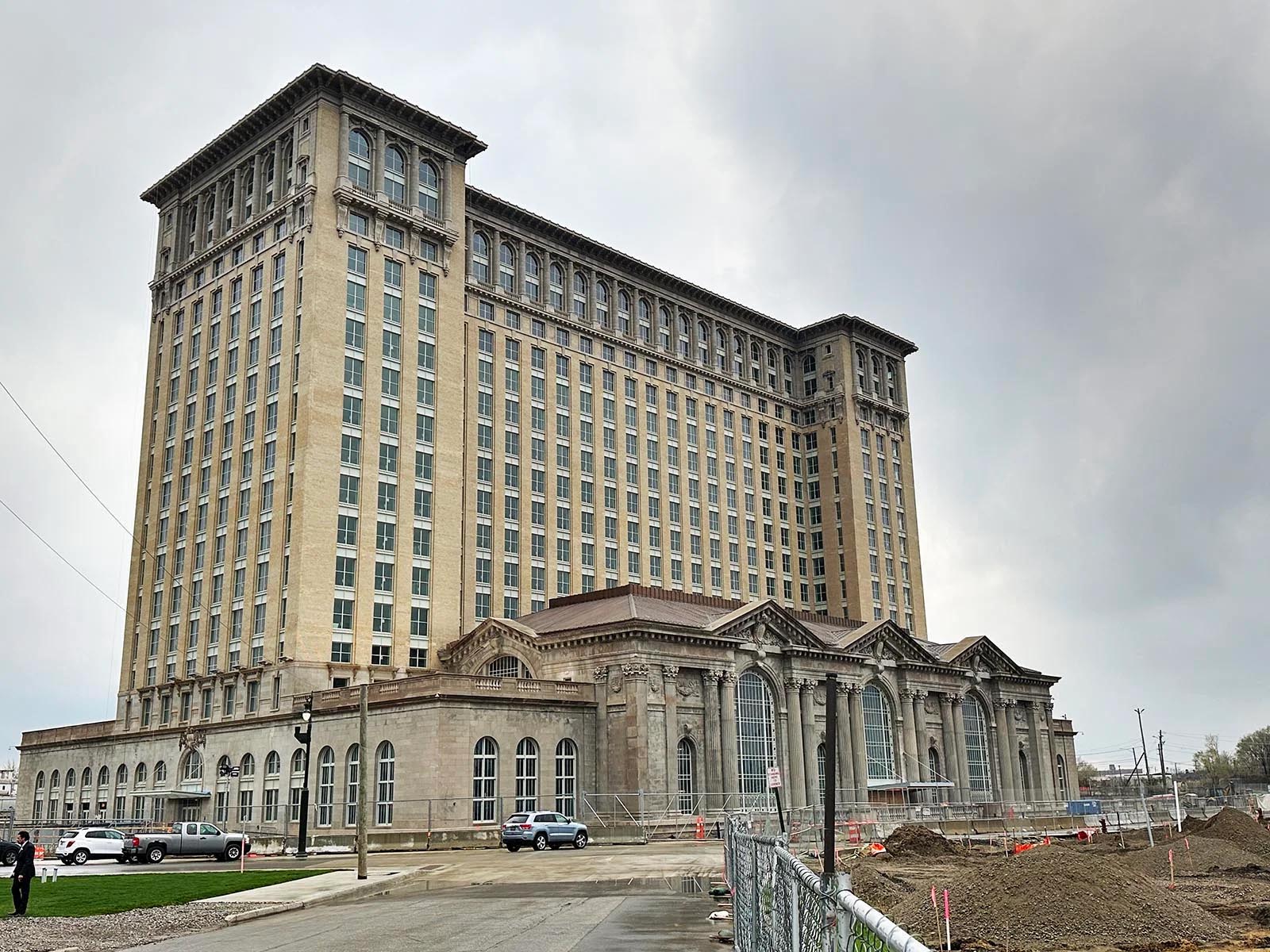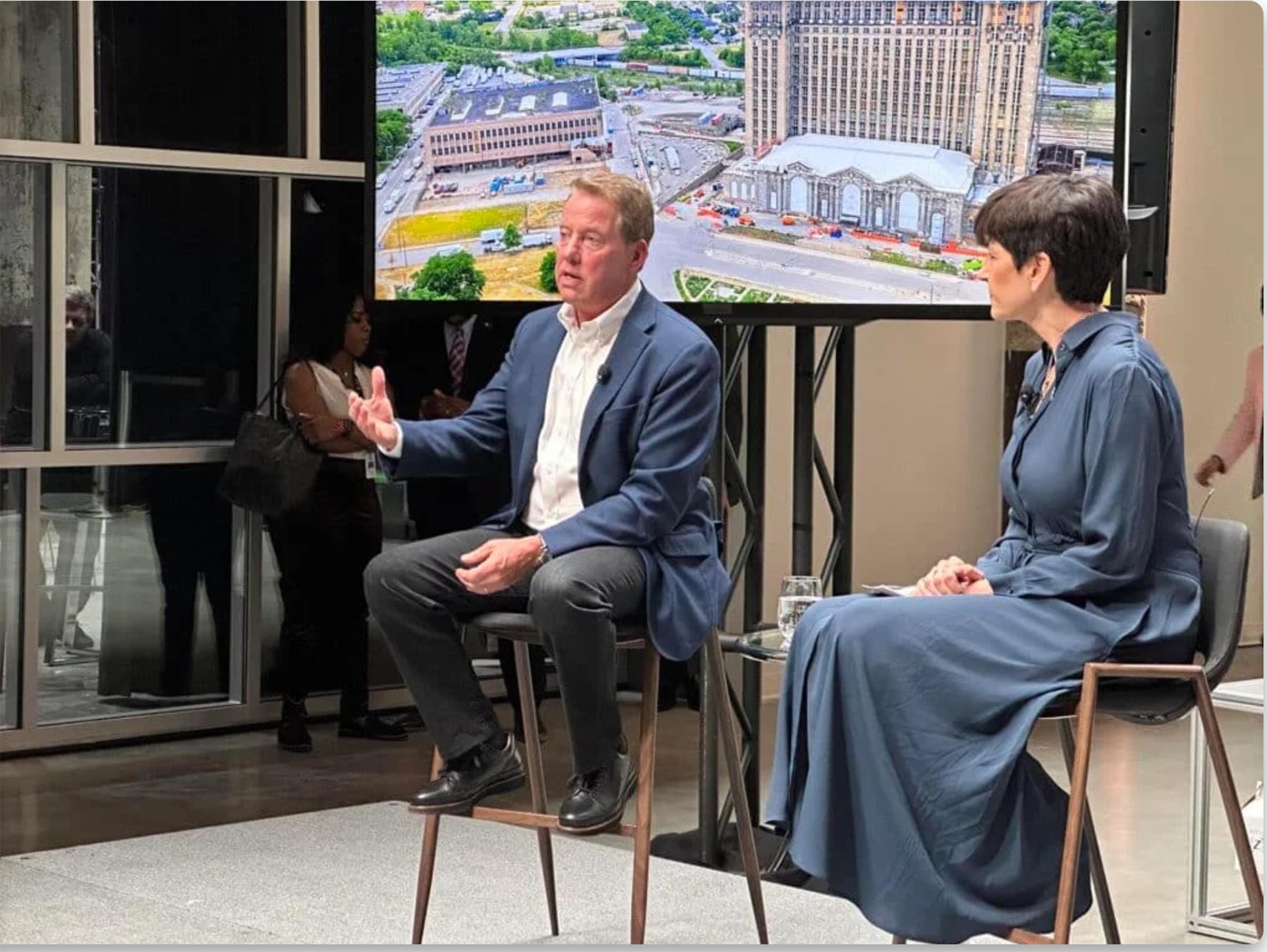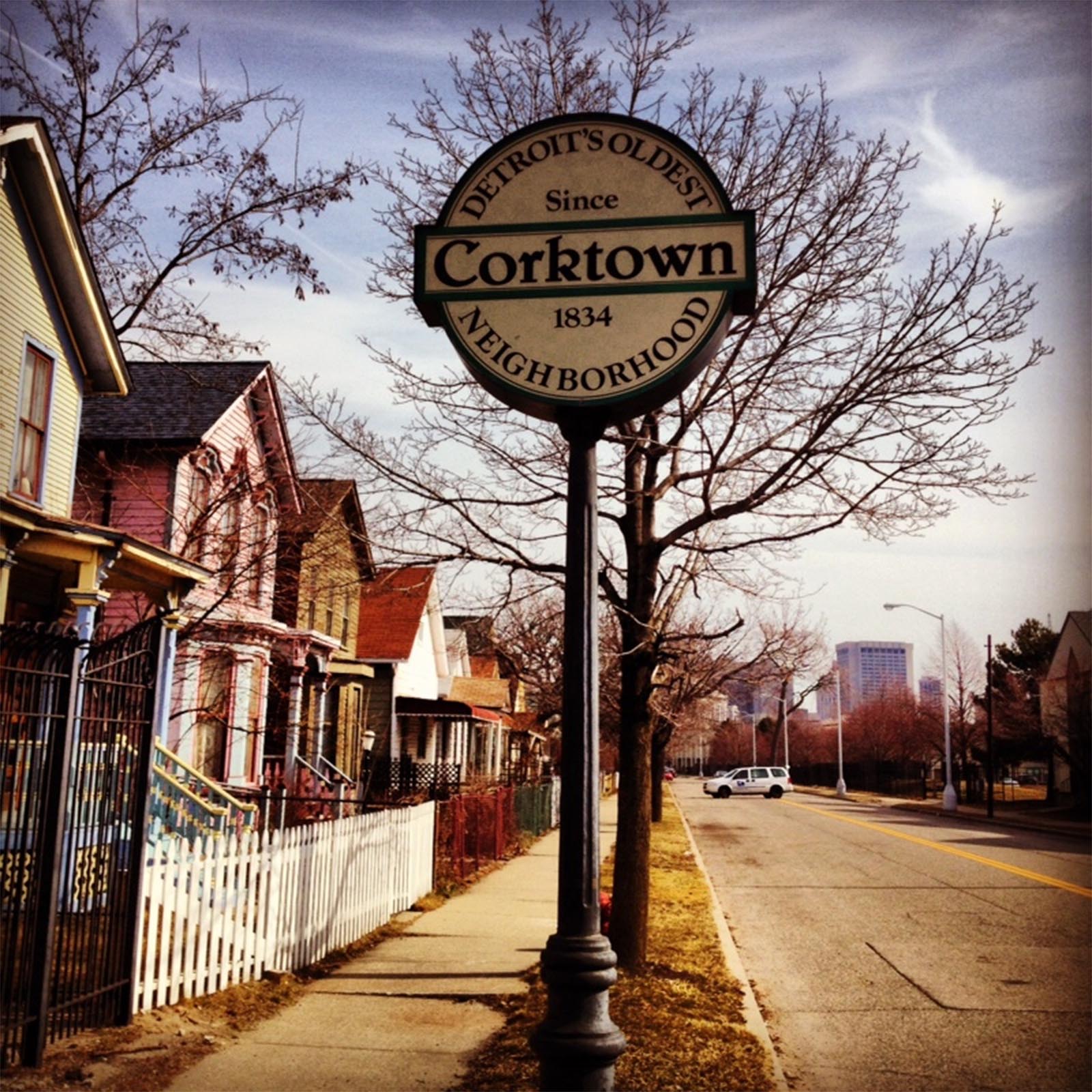When it opened 110 years ago, the Michigan Central depot was the tallest train station in the world and a showpiece for a city at its peak. Since it shut down in 1988, however, it’s been a symbol of urban decay and the decline of Detroit, in particular. Now, after a massive six-year renovation, Michigan Central Station is set to reopen on June 6, and will serve as the new technology hub for Ford Motor Co.

Ruin porn. The Michigan Central Station was, for decades, a crumbling symbol of Detroit’s decay. Photo: courtesy Wikipedia.
Designed in the Beaux-Arts style, the 18-story Michigan Central Station has served as a symbol of Detroit’s good times and bad. When it opened in 1914, the Motor City was in its glory, the Silicon Valley of its day. But, by the time the last train left and the station was closed in 1988, the depot had become an icon of urban decay.
Now, it’s getting set to reopen on June 6, and the symbolic ties to California’s center of technology are more than figurative. The reborn facility – along with a number of surrounding buildings – is set to become the home of Ford Motor Co’s push into autonomous, connected and electrified vehicles.
The mission for the facility is to develop “breakthrough solutions at the intersection of mobility and society,” Ford Chairman Bill Ford said during an event last year.
From riches to ruins to restoration
When it first opened, the depot was meant to show off the vast wealth being minted in the heart of the fast-growing auto industry. The station was designed by the same team that had crafted New York’s Grand Central Terminal and it was equally ornate – but taller.
In its early year, the Michigan Central Station was as important a transportation hub as Detroit Metropolitan Airport is today. But the rise of the automobile and, later, the airplane, began to diminish its role, especially during the Great Depression. Things grew worse after the riots of 1968 and the acceleration of “white flight,” the city’s population collapsing. In 1988, it closed. Sold to Matty Moroun, a notorious local landholder and developer, talk of renovation repeatedly went nowhere. As recently as a decade ago the question of demolition was frequently being asked.
In June 2018 Ford delivered a shock, aggressing to buy the depot for just $90 million. It was to become the Ford’s new technology center. And the automaker promised to spare no expense restoring the facility to its former grandeur. By the time the grand, gilded doors of the Michigan Central Station reopen, according to several of the people involved in the restoration project, Ford is expected to have spent about $1 billion on both the restoration and the creation of a surrounding high-tech campus.
More Ford News
- Ford shifting focus to smaller, more affordable EVs
- Farley reveals EV “skunkworks” program
- Ford reports full-year profit – but Q4 loss

Until recently, the barbed wire kept visitors from seeing restoration work at the depot, most of it taking place inside.
Lights on
For much of the past six years, there’s been little to see for all the money Ford has been pumping into the station, beyond new windows. Most of the work focused on interior renovations, especially the grand foyer and mezzanines.
Last spring, the automaker did reopen the former Detroit Schools Book Depository which dominates the adjoining blockr. Designed by the legendary Albert Kahn, who was the lead architect for many Ford Motor Co. projects, the sprawling building is the new home of Newlab. It’s a high-tech incubator, explained Joshua Sirefman, who came on as CEO of the “Michigan Central Innovation District” in February 2022.
“The path to a more sustainable and equitable future could be invented here,” he told a standing-room-only crowd that gathered at the newly reopened Book Depository last April.
In more recent months, outside renovations at the Michigan Central have become more obvious – and accelerated. And, for the first time in years, the facility has been fully lighted. This week, local residents discovered the exterior highlighted by the numbers 06.06.24 (in Hawaiian Blue, the color used by the Ford family’s Detroit Lions football team).

Plenty of folks initially questioned Ford Chairman Bill Ford’s sanity when he decided to buy the decrepit train station.
“Out of my mind”
Ford Chairman Bill Ford told me several years back how proud he is to be able to revive the old train station. It’s more than that, he added. The old hulk was an anchor on the surrounding Corktown neighborhood – the oldest in the city and the home of some of Detroit’s first Irish settlers, including the Ford family.
Still, making the pitch to the Ford board of directors wasn’t initially easy, Ford acknowledged last year. There were plenty of folks who thought “I was out of my mind.”
Kickstarting a community
In the six years since the acquisition, Corktown has become one of the most vibrant neighborhoods in a resurgent Motor City. It hosts new shops and restaurants. Home owners have been making long-needed renovations. Long-abandoned storefronts and other facilities are being brought back to life. In turn, several surrounding neighborhoods have also been seeing an influx of new residents and development money.
As many as 1,400 people are eventually expected to work at the now-open Book Depository Building, thousands more at the Michigan Central and other Ford properties. Still more are finding work – and home – in Corktown and surrounding neighborhoods.
For Ford, the old depot and its adjoining Innovation District will be equally important. The company has to face a radically changing auto industry, one where digital technology will be at least as important as mechanical systems. Michigan Central will no longer just reflect the community around it. It will now be an essential part of it.




0 Comments